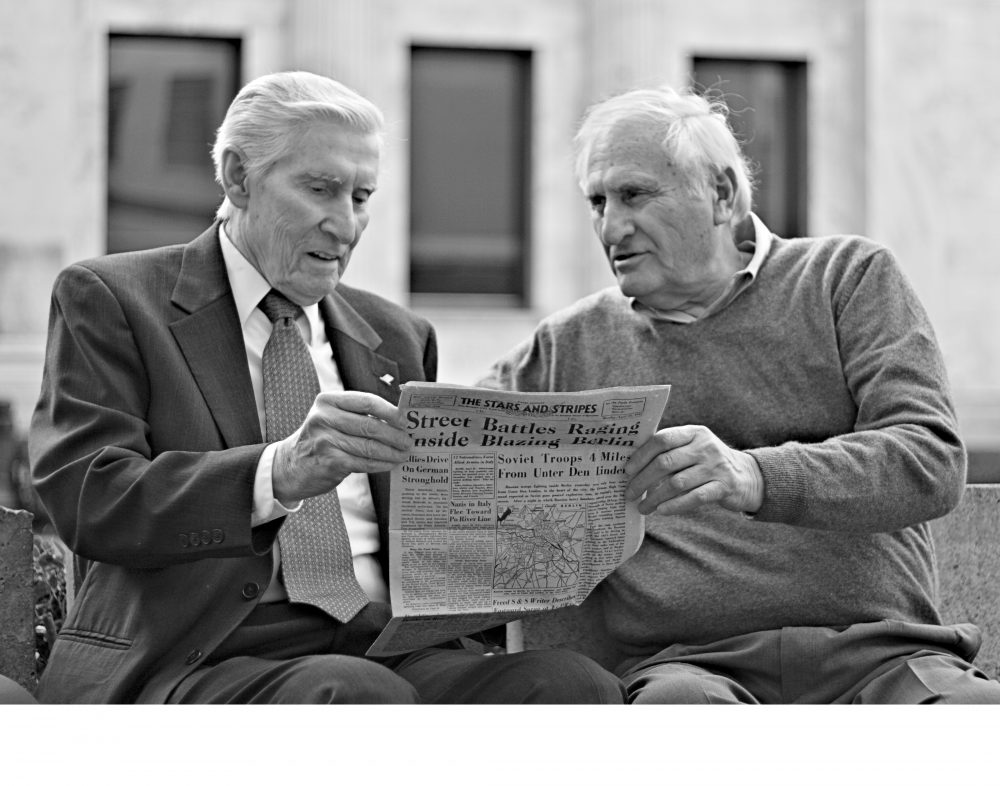
The Liberator and the Liberated
By: Becky Seitel“Welcome to hell.”
Those were the words spoken to 18-year-old Joe Sacco by a fellow infantryman when they entered the gates of Dachau on May 29, 1945. Fashioned atop the gates was a sign reading “Arbeit Macht Frei” or “Work Makes Free.” Yet it wasn’t work that freed the prisoners of Dachau. It was the American troops.
Joe grew up in Birmingham, where he still lives today, more than 60 years after he witnessed the atrocities at Dachau. “Everywhere I looked, in every direction, I saw dead women, children, old men, babies, beaten, starved, stabbed, shot, butchered, and left to rot on the ground,” he recalls in Where the Birds Never Sing, a book written about his experiences by his son, Jack Sacco.
Max Steinmetz spent time at Dachau but wasn’t there when Joe and the 92nd Signal Battalion arrived. He had left weeks earlier on a death march before being liberated by American troops. He realizes that without the American, British, and Russian forces, liberation day might never have arrived.
“I met Joe several years ago,” says Max. “It’s been amazing to hear him talk about that day and how the troops felt when they learned the truth of the Holocaust. And it seemed that a circle had been completed – the Liberator met the Liberated.”


